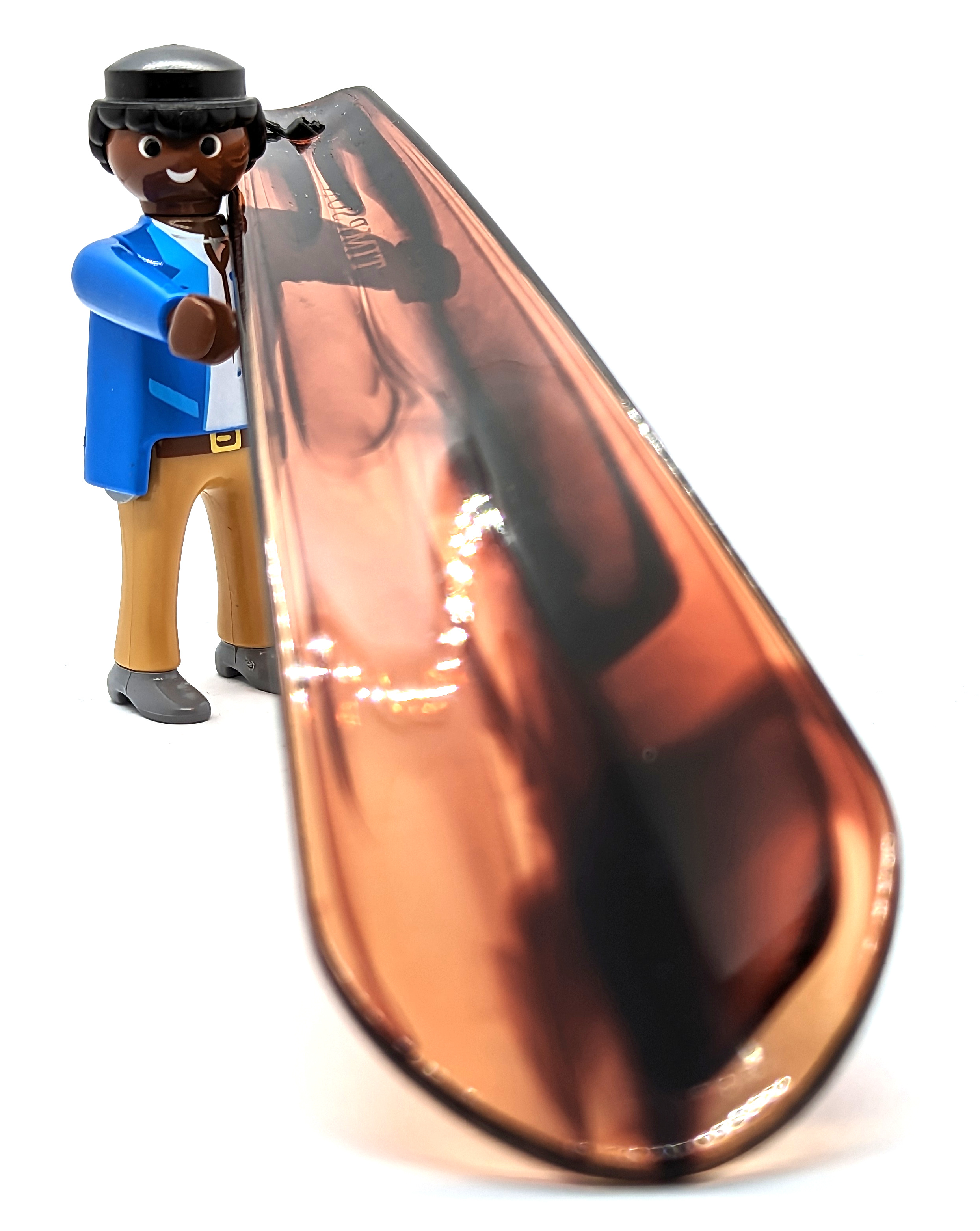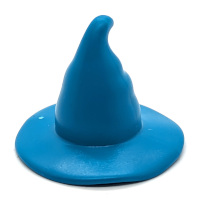| age | hrs_wk | method | R_AGE |
|---|---|---|---|
| 9.982 | 5.137 | phonics | 14.090 |
| 8.006 | 4.353 | phonics | 11.762 |
| 9.349 | 5.808 | phonics | 13.838 |
| 8.620 | 3.612 | word | 6.620 |
| 8.060 | 4.447 | word | 7.524 |
| 6.117 | 5.085 | word | 5.502 |
Interactions
Univariate Statistics and Methodology using R
Psychology, PPLS
University of Edinburgh
Two Weeks Ago

Two Weeks Ago
Two Weeks Ago
Call:
lm(formula = R_AGE ~ age + hrs_wk, data = reading)
Residuals:
Min 1Q Median 3Q Max
-3.820 -2.382 0.074 2.404 3.549
Coefficients:
Estimate Std. Error t value Pr(>|t|)
(Intercept) 0.518 2.422 0.21 0.832
age 0.578 0.222 2.61 0.012 *
hrs_wk 0.945 0.406 2.33 0.024 *
---
Signif. codes: 0 '***' 0.001 '**' 0.01 '*' 0.05 '.' 0.1 ' ' 1
Residual standard error: 2.55 on 47 degrees of freedom
Multiple R-squared: 0.253, Adjusted R-squared: 0.221
F-statistic: 7.97 on 2 and 47 DF, p-value: 0.00105Two Weeks Ago
Interactions 1
Before we Reach for R
our model says that
ageandhrs_wkhave orthogonal effects- whatever your age, an extra hour of reading/wk improves your reading age by 0.95 years
- however much you read, an extra year of age improves your reading age by 0.58 years
what if practice affects people of different ages differently?


- possibly our model isn’t a good fit to the data?
How Good is the Model?
Interaction is Just Multiplication
linear model with two predictors
\[\color{red}{\textrm{outcome}_i}=\color{blue}{(\textrm{model})_i}+\textrm{error}_i\] \[\color{red}{y_i}=\color{blue}{b_0}\cdot{}\color{orange}{1}+\color{blue}{b_1}\cdot{}\color{orange}{x_{1i}}+\color{blue}{b_2}\cdot{}\color{orange}{x_{2i}}+\epsilon_i\]
linear model with interaction
\[\color{red}{y_i}=\color{blue}{b_0}\cdot{}\color{orange}{1}+\color{blue}{b_1}\cdot{}\color{orange}{x_{1i}}+\color{blue}{b_2}\cdot{}\color{orange}{x_{2i}}+\color{blue}{b_3}\cdot{}\color{orange}{x_{1i}x_{2i}}+\epsilon_i\] \[\color{red}{\hat{y_i}}=\color{blue}{b_0}\cdot{}\color{orange}{1}+\color{blue}{b_1}\cdot{}\color{orange}{x_{1i}}+\color{blue}{b_2}\cdot{}\color{orange}{x_{2i}}+\color{blue}{b_3}\cdot{}\color{orange}{x_{1i}x_{2i}}\]
Model with Interaction
\[\color{red}{y_i}=\color{blue}{b_0}\cdot{}\color{orange}{1}+\color{blue}{b_1}\cdot{}\color{orange}{x_{1i}}+\color{blue}{b_2}\cdot{}\color{orange}{x_{2i}}+\color{blue}{b_3}\cdot{}\color{orange}{x_{1i}x_{2i}}+\epsilon_i\]
\[\color{red}{\hat{y_i}}=\color{blue}{b_0}\cdot{}\color{orange}{1}+\color{blue}{b_1}\cdot{}\color{orange}{x_{1i}}+\color{blue}{b_2}\cdot{}\color{orange}{x_{2i}}+\color{blue}{b_3}\cdot{}\color{orange}{x_{1i}x_{2i}}\]
\[\color{red}{\hat{y_i}}=\color{blue}{b_0}\cdot{}\color{orange}{1}+\color{blue}{b_1}\cdot{}\color{orange}{x_{1i}}+\color{blue}{b_2}\cdot{}\color{orange}{x_{2i}}+\color{blue}{b_3}\cdot{}\color{orange}{x_{1i}x_{2i}}\]
\(\color{blue}{b_0=1}\)
\(\color{blue}{b_1=1.5}\)
\(\color{blue}{b_2=2}\)
\(\color{blue}{b_3=0.5}\)
\(\color{red}{x_{1i}=2}\)
\[\color{red}{\hat{y_i}}=\color{blue}{b_0}\cdot{}\color{orange}{1}+\color{blue}{b_1}\cdot{}\color{orange}{x_{1i}}+\color{blue}{b_2}\cdot{}\color{orange}{x_{2i}}+\color{blue}{b_3}\cdot{}\color{orange}{x_{1i}x_{2i}}\]
\(\color{blue}{b_0=1}\)
\(\color{blue}{b_1=1.5}\)
\(\color{blue}{b_2=2}\)
\(\color{blue}{b_3=0.5}\)
\(\color{red}{x_{1i}=2}\)
\(\color{green}{x_{1i}=4}\)
Model with Interaction
Call:
lm(formula = R_AGE ~ 1 + hrs_wk + age + hrs_wk:age, data = reading)
Residuals:
Min 1Q Median 3Q Max
-4.217 -2.172 -0.049 2.144 4.318
Coefficients:
Estimate Std. Error t value Pr(>|t|)
(Intercept) 24.792 11.904 2.08 0.043 *
hrs_wk -3.818 2.324 -1.64 0.107
age -2.348 1.423 -1.65 0.106
hrs_wk:age 0.569 0.274 2.08 0.043 *
---
Signif. codes: 0 '***' 0.001 '**' 0.01 '*' 0.05 '.' 0.1 ' ' 1
Residual standard error: 2.46 on 46 degrees of freedom
Multiple R-squared: 0.317, Adjusted R-squared: 0.273
F-statistic: 7.13 on 3 and 46 DF, p-value: 0.000496Model with Interaction
Model with Interaction
Interactions 2
Categorical Predictors
how does interaction work with categorical predictors?
(as you’ll see) it’s all just multiplication
| age | hrs_wk | method | R_AGE |
|---|---|---|---|
| 9.982 | 5.137 | phonics | 14.090 |
| 8.006 | 4.353 | phonics | 11.762 |
| 9.349 | 5.808 | phonics | 13.838 |
| 8.620 | 3.612 | word | 6.620 |
| 8.060 | 4.447 | word | 7.524 |
| 6.117 | 5.085 | word | 5.502 |
- how is
methodcoded by R?
A (Different) Two-Predictor Model
we know that
hrs_wkaffects reading ageperhaps
methodaffects reading age too?this is a question of model improvement
Analysis of Variance Table
Response: R_AGE
Df Sum Sq Mean Sq F value Pr(>F)
hrs_wk 1 59.4 59.4 26.9 4.4e-06 ***
method 1 245.6 245.6 111.3 5.5e-14 ***
Residuals 47 103.7 2.2
---
Signif. codes: 0 '***' 0.001 '**' 0.01 '*' 0.05 '.' 0.1 ' ' 1A Two-Predictor Model
Call:
lm(formula = R_AGE ~ hrs_wk + method, data = reading)
Residuals:
Min 1Q Median 3Q Max
-3.389 -1.008 0.209 1.055 2.430
Coefficients:
Estimate Std. Error t value Pr(>|t|)
(Intercept) 7.237 1.205 6.00 2.6e-07 ***
hrs_wk 1.003 0.231 4.35 7.2e-05 ***
methodword -4.446 0.421 -10.55 5.5e-14 ***
---
Signif. codes: 0 '***' 0.001 '**' 0.01 '*' 0.05 '.' 0.1 ' ' 1
Residual standard error: 1.49 on 47 degrees of freedom
Multiple R-squared: 0.746, Adjusted R-squared: 0.735
F-statistic: 69.1 on 2 and 47 DF, p-value: 1.01e-14A Two-Predictor Model
note that the lines are parallel
an hour of practice has the same effect, however you’re taught
Different Effects for Different Methods?
Analysis of Variance Table
Response: R_AGE
Df Sum Sq Mean Sq F value Pr(>F)
hrs_wk 1 59.4 59.4 29.5 2.0e-06 ***
method 1 245.6 245.6 122.2 1.5e-14 ***
hrs_wk:method 1 11.3 11.3 5.6 0.022 *
Residuals 46 92.5 2.0
---
Signif. codes: 0 '***' 0.001 '**' 0.01 '*' 0.05 '.' 0.1 ' ' 1Different Effects for Different Methods
Call:
lm(formula = R_AGE ~ hrs_wk + method + hrs_wk:method, data = reading)
Residuals:
Min 1Q Median 3Q Max
-2.995 -0.674 0.242 1.017 2.593
Coefficients:
Estimate Std. Error t value Pr(>|t|)
(Intercept) 5.499 1.365 4.03 0.00021 ***
hrs_wk 1.347 0.264 5.11 0.0000061 ***
methodword 1.183 2.413 0.49 0.62629
hrs_wk:methodword -1.134 0.479 -2.37 0.02224 *
---
Signif. codes: 0 '***' 0.001 '**' 0.01 '*' 0.05 '.' 0.1 ' ' 1
Residual standard error: 1.42 on 46 degrees of freedom
Multiple R-squared: 0.774, Adjusted R-squared: 0.759
F-statistic: 52.4 on 3 and 46 DF, p-value: 6.95e-15Interaction is Just Multiplication
\[\color{red}{\hat{y_i}}=\color{blue}{b_0}\cdot{}\color{orange}{1}+\color{blue}{b_1}\cdot{}\color{orange}{x_{1i}}+\color{blue}{b_2}\cdot{}\color{orange}{x_{2i}}+\color{blue}{b_3}\cdot{}\color{orange}{x_{1i}x_{2i}}\]
(Intercept) hrs_wk methodword hrs_wk:methodword
5.499 1.347 1.183 -1.134 \[\color{red}{\hat{\textrm{R_AGE}}}=\color{blue}{5.499}\cdot{}\color{orange}{1}+\color{blue}{1.347}\cdot{}\color{orange}{\textrm{hrs_wk}}+\color{blue}{1.183}\cdot{}\color{orange}{\textrm{method}}+\color{blue}{-1.134}\cdot{}\color{orange}{\textrm{hrs_wk}\cdot{}\textrm{method}}\]
the coefficients show you which way things are coded
methodwordcan be read as “whenmethodisword”
Interaction is Just Multiplication
- when
methodis (coded as) zero (for phonics):
\[\color{red}{\hat{\textrm{R_AGE}}}=\color{blue}{5.499}\cdot{}\color{orange}{1}+\color{blue}{1.347}\cdot{}\color{orange}{\textrm{hrs_wk}}+\color{blue}{1.183}\cdot{}\color{orange}{0}+\color{blue}{-1.134}\cdot{}\color{orange}{\textrm{hrs_wk}\cdot{}0}\]
\[\color{red}{\hat{\textrm{R_AGE}}}=\color{blue}{5.499}\cdot{}\color{orange}{1}+\color{blue}{1.347}\cdot{}\color{orange}{\textrm{hrs_wk}}\]
- when
methodis (coded as) one (for word):
\[\color{red}{\hat{\textrm{R_AGE}}}=\color{blue}{5.499}\cdot{}\color{orange}{1}+\color{blue}{1.347}\cdot{}\color{orange}{\textrm{hrs_wk}}+\color{blue}{1.183}\cdot{}\color{orange}{1}+\color{blue}{-1.134}\cdot{}\color{orange}{\textrm{hrs_wk}\cdot{}1}\]
\[\color{red}{\hat{\textrm{R_AGE}}}=\color{blue}{6.682}\cdot{}\color{orange}{1}+\color{blue}{0.213}\cdot{}\color{orange}{\textrm{hrs_wk}}\]
No More Parallel Lines
A Nice Graph
geom_smooth(method="lm")effectively runs a linear model, to make a graphit’s not an analysis
Interactions 3
Category x Category

| age | hrs_wk | method | school | R_AGE |
|---|---|---|---|---|
| 9.982 | 5.137 | phonics | private | 14.090 |
| 8.006 | 4.353 | phonics | state | 11.762 |
| 9.349 | 5.808 | phonics | state | 13.838 |
| 8.620 | 3.612 | word | private | 6.620 |
| 8.060 | 4.447 | word | private | 7.524 |
| 6.117 | 5.085 | word | state | 5.502 |
shoehorning in one more reading example
does where it’s taught affect the efficacy of a method?
Where to Start
- when looking at continuous predictors, we started with a model criticism
- when looking at mixed predictors, we looked at model improvement
Analysis of Variance Table
Response: R_AGE
Df Sum Sq Mean Sq F value Pr(>F)
hrs_wk 1 59.4 59.4 29.5 2.0e-06
method 1 245.6 245.6 122.2 1.5e-14
hrs_wk:method 1 11.3 11.3 5.6 0.022
Residuals 46 92.5 2.0 Where to Start
where you start depends on what you’re doing
have I got a good model? (no: one of many possible issues: missing predictor)
can I improve a model? (for example, I am exploring which predictors are relevant)
in the present case, we already have a theory (that different schools are using the teaching methods differently)
this time we’ll start by looking at the data
Reading Age by School and Method
A Much Better Graph
An Analysis
looking at the graph, it seems as if
the state school is doing a bit better
but it depends which method we look at
we wouldn’t be able to predict how well a child would do without knowing which kind of school and which method
it seems (graphically) as if our theory/hunch was right
what about statistically?
Fitting a Model
Analysis of Variance Table
Response: R_AGE
Df Sum Sq Mean Sq F value Pr(>F)
method 1 263 263.2 110.56 8.1e-14 ***
school 1 5 5.0 2.11 0.15357
method:school 1 31 31.0 13.02 0.00076 ***
Residuals 46 110 2.4
---
Signif. codes: 0 '***' 0.001 '**' 0.01 '*' 0.05 '.' 0.1 ' ' 1
What the Model Tells Us
Call:
lm(formula = R_AGE ~ method + school + method:school, data = reading)
Residuals:
Min 1Q Median 3Q Max
-2.620 -1.132 -0.030 0.926 3.877
Coefficients:
Estimate Std. Error t value Pr(>|t|)
(Intercept) 11.258 0.428 26.31 < 2e-16 ***
methodword -3.038 0.618 -4.92 0.000012 ***
schoolstate 2.209 0.618 3.58 0.00083 ***
methodword:schoolstate -3.152 0.873 -3.61 0.00076 ***
---
Signif. codes: 0 '***' 0.001 '**' 0.01 '*' 0.05 '.' 0.1 ' ' 1
Residual standard error: 1.54 on 46 degrees of freedom
Multiple R-squared: 0.732, Adjusted R-squared: 0.715
F-statistic: 41.9 on 3 and 46 DF, p-value: 3.32e-13F(3,46)=41.9
What the Model Tells Us
Estimate Std. Error t value Pr(>|t|)
(Intercept) 11.258 0.428 26.31 < 2e-16 ***
methodword -3.038 0.618 -4.92 0.000012 ***
schoolstate 2.209 0.618 3.58 0.00083 ***
methodword:schoolstate -3.152 0.873 -3.61 0.00076 ***- what is the intercept?
the predicted reading age of someone who has been to private school and taught using phonics
- what does
methodwordmean?
being taught using the word method reduces your reading age by 3 years if you went to private school
What the Model Tells Us (2)
Estimate Std. Error t value Pr(>|t|)
(Intercept) 11.258 0.428 26.31 < 2e-16 ***
methodword -3.038 0.618 -4.92 0.000012 ***
schoolstate 2.209 0.618 3.58 0.00083 ***
methodword:schoolstate -3.152 0.873 -3.61 0.00076 ***- what does
schoolstatemean?
being taught in a state school increases your predicted reading age by 2.2 years if you are taught using the phonics method
- and the interaction?
compared to being taught using the phonics method in a private school, your predicted reading age is -3+2.2+-3.2 years different (i.e., it is 11.3-4 or 7.3 years)
What the Model Doesn’t Tell Us
we can’t say anything general about the value of each method
we can’t say anything general about the effectiveness of schools
no main effects
possibly the only useful information we have is the interaction
we can fix this…
Coding Categories, Again
- all of the maths on the last few slides works out because the categorical predictors are, underlyingly, dummy coded
for example the interaction term can only be added when \(\color{orange}{x_{1i}}\) and \(\color{orange}{x_{2i}}\) (here,
methodandschool) are equal to 1- it applies for state
school, wordmethod
- it applies for state
What If We Change Things?
\[\color{red}{\hat{y_i}}=\color{blue}{b_0}\cdot{}\color{orange}{1}+\color{blue}{b_1}\cdot{}\color{orange}{x_{1i}}+\color{blue}{b_2}\cdot{}\color{orange}{x_{2i}}+\color{blue}{b_3}\cdot{}\color{orange}{x_{1i}x_{2i}}\]
what we’ve done is changed the values of \(\color{orange}{x_{1}}\) and \(\color{orange}{x_{2}}\)
where
methodi is phonics, \(\color{orange}{x_{1i}}=-0.5\)where
methodi is word, \(\color{orange}{x_{1i}}=+0.5\)
similarly for
schooland \(\color{orange}{x_{2}}\)
Running the Model
- NB., we’ve changed the contrast coding in the previous slide
Call:
lm(formula = R_AGE ~ method * school, data = reading)
Residuals:
Min 1Q Median 3Q Max
-2.620 -1.132 -0.030 0.926 3.877
Coefficients:
Estimate Std. Error t value Pr(>|t|)
(Intercept) 10.056 0.218 46.05 < 2e-16 ***
method1 -4.614 0.437 -10.56 6.9e-14 ***
school1 0.634 0.437 1.45 0.15357
method1:school1 -3.152 0.873 -3.61 0.00076 ***
---
Signif. codes: 0 '***' 0.001 '**' 0.01 '*' 0.05 '.' 0.1 ' ' 1
Residual standard error: 1.54 on 46 degrees of freedom
Multiple R-squared: 0.732, Adjusted R-squared: 0.715
F-statistic: 41.9 on 3 and 46 DF, p-value: 3.32e-13F(3,46)=41.9
What the Model Tells Us
Estimate Std. Error t value Pr(>|t|)
(Intercept) 10.056 0.218 46.05 < 2e-16 ***
method1 -4.614 0.437 -10.56 6.9e-14 ***
school1 0.634 0.437 1.45 0.15357
method1:school1 -3.152 0.873 -3.61 0.00076 ***note the output isn’t as helpful here, you have to remember which values are 1
depends which you assigned positive values
here, word
method, stateschool
- for someone in private
schoolusing phonicsmethod
reading age = 10.1 - \(\frac{1}{2}\)·-4.6 - \(\frac{1}{2}\)·0.6 + \(\frac{1}{4}\)·-3.2
reading age = 10.1 + 2.3 - 0.3 - 0.8 = 11.3 years
…etc.
What’s Good About This?
- effect of
schoolwith (-.5, .5) contrast coding
What’s Good About This? (2)
- effect of
methodwith (-.5, .5) contrast coding
These are Main Effects
Estimate Std. Error t value Pr(>|t|)
(Intercept) 10.056 0.218 46.05 < 2e-16 ***
method1 -4.614 0.437 -10.56 6.9e-14 ***
school1 0.634 0.437 1.45 0.15357
method1:school1 -3.152 0.873 -3.61 0.00076 ***on average, phonics is a better method for teaching
on average, there is no (statistical) difference between types of school
there’s also an interaction between these two predictors (but we should really calculate it out to ensure that we know what it “means”)
a quick read: when
schoolis state andmethodis word, reading age is reducedbut this obscures the fact that state schools are particularly good on phonics—perhaps we should recode?
![]() Sum Coding
Sum Coding
- R provides a quick and dirty way of setting similar contrasts
Estimate Std. Error t value Pr(>|t|)
(Intercept) 10.025 0.246 40.71 < 2e-16 ***
method1 -4.589 0.492 -9.32 0.0000000000024 *** Sum Coding
Sum Coding